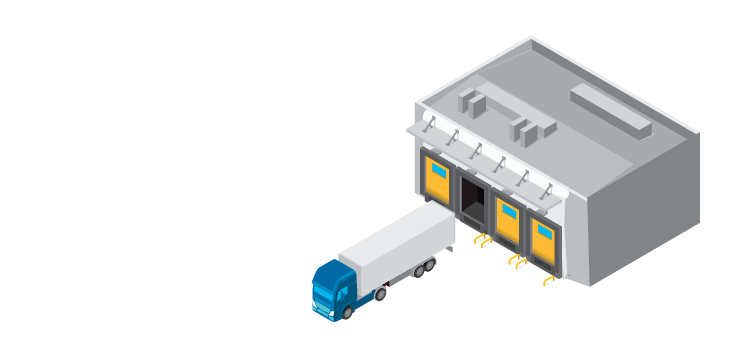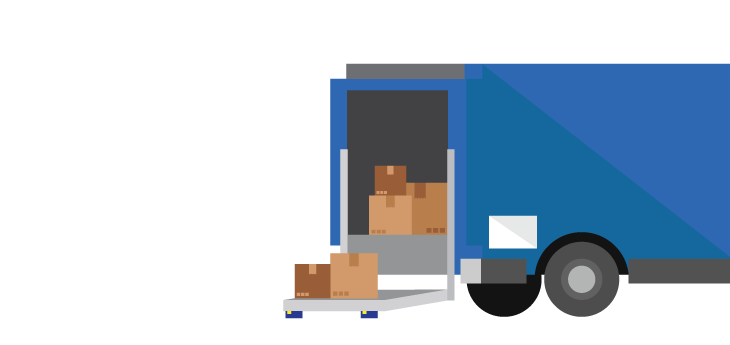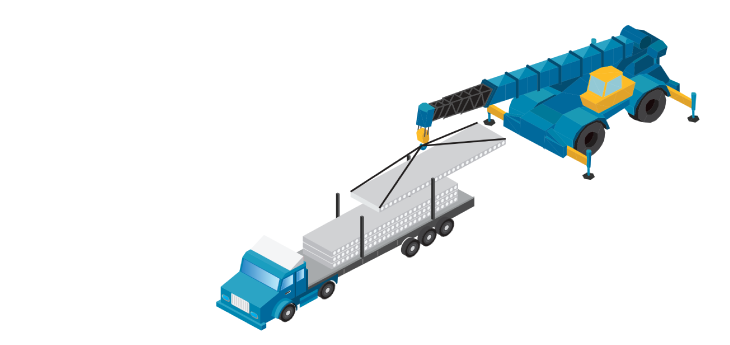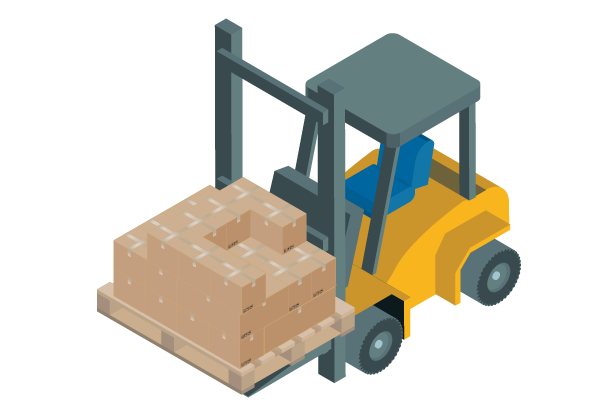The ins and outs of loading and unloading freight from trucks
People have been lifting and lowering things for thousands of years. It’s no wonder that we’ve gotten pretty good at it by now.
That means that when it comes to loading and unloading cargo from a truck, you’re left with a lot of options.
First off, it’s very important to reach out to your shipper or consignee and confirm what they have on offer. Are they a business with a dock or forklift? Do they want the shipment dropped off at a carrier’s terminal, perhaps or will they require a tailgate?
Based on their answers you will want to plan and get your shipping quote accordingly.
Dock
If a dock is available, that is likely your best option.
A dock is a platform, usually about 48” in height used for loading and unloading cargo.

Docks are tailor-made for freight trucks and although their appearance may vary, docks are always the simplest solution when it comes to loading and unloading standard-sized cargo.
Forklift
A forklift is usually the second-best option. Arguably, it’s as good as a dock.
The pros of a forklift are that it’s mobile, it can directly move the cargo where it needs to be as soon as it unloads it from the truck and it can be moved out of the way when not in use. On top of all that, forklifts can be rented as needed.

The downside is that forklifts have a limit to what they can lift and maneuver. The limit can be pretty high, depending on the forklift used, but sometimes cargo can be so heavy that even a forklift is not enough. Forklift weight capacity can vary from 3000 lbs up to 75 000 lbs (by specialized forklifts) so if you’re looking to purchase or rent a forklift, carefully consider your exact needs.
Tailgate/Liftgate
The third most common option is to use a tailgate/liftgate.
Tailgates, or liftgates as they’re known in the USA, are lifts at the back of a truck used for loading and unloading cargo.

They are useful for locations that don’t have their own means to load/unload cargo, but they have their limits: generally, they can accommodate 1300-1500 lbs in weight and about 72” x 48” x 82” in dimensions.
Loading Ramps
If you don’t have a dock, but do not want to commit to a forklift (or you simply don’t have a qualified forklift operator), consider using a loading ramp.
Loading ramps are an excellent alternative to loading docks and forklifts. They are small, mobile ramps (inclinations) that can be wheeled up to the tail end of the truck to safely and easily unload cargo.
Handbombing
If you don’t have access to any of the above, consider handbombing your shipment off the truck.
For those new to freight shipping, that does not mean blowing your shipment up (please don’t do that). What it means is that you would simply unload your shipment by hand.
The downside to this method is that carriers will often not allow it for safety reasons. With that said, if your shipment is relatively light (under about 120 lbs), the carrier should allow you or your staff to unload this way. It is best to check beforehand with your Freightera shipping expert to make sure that there are no unpleasant surprises.
Driver Assistance
Driver assistance is like handbombing on steroids.
For a fee, the driver will unpack the cargo onboard the truck which allows for much easier unloading by your staff. Depending on the carrier, the driver might be able to perform additional services such as breaking apart the pallet or removing debris (although debris removal usually falls under white glove services, which we’ll talk more about a bit later).
Terminal to Terminal
Shipping terminal to terminal
this is a great option to avoid all of the headaches with waiting for a driver and hurrying to load or unload while they are on-site to avoid waiting time fees. For those out there that have the means (trucks), terminal to terminal shipping might be the best option.
Simply drop your shipment off at a terminal on your own time and get notified when it arrives at the delivery terminal. And to top all that off, it’s considered as shipping business to business, which means no accessorial charges.
Cranes
In most extreme circumstances, you might want to consider requesting a crane.

For shipments that are too large or too heavy to be unloaded via forklift, consider using a crane.
Cranes can be a part of the truck or external. For crane services provided by the carrier, please consult with your Freightera shipping specialist for more information.

